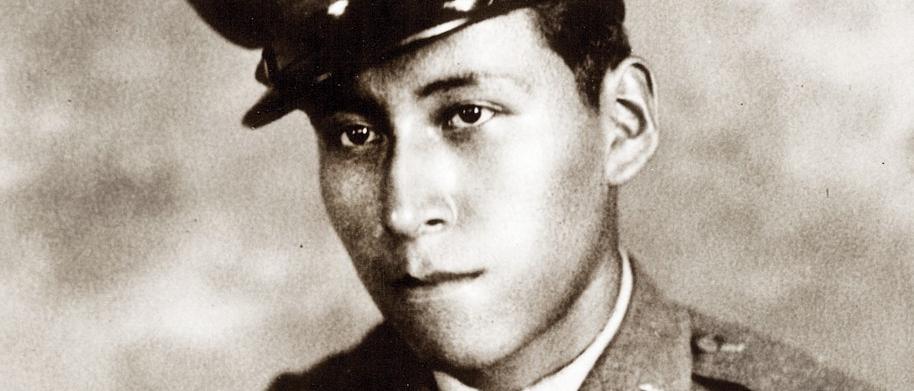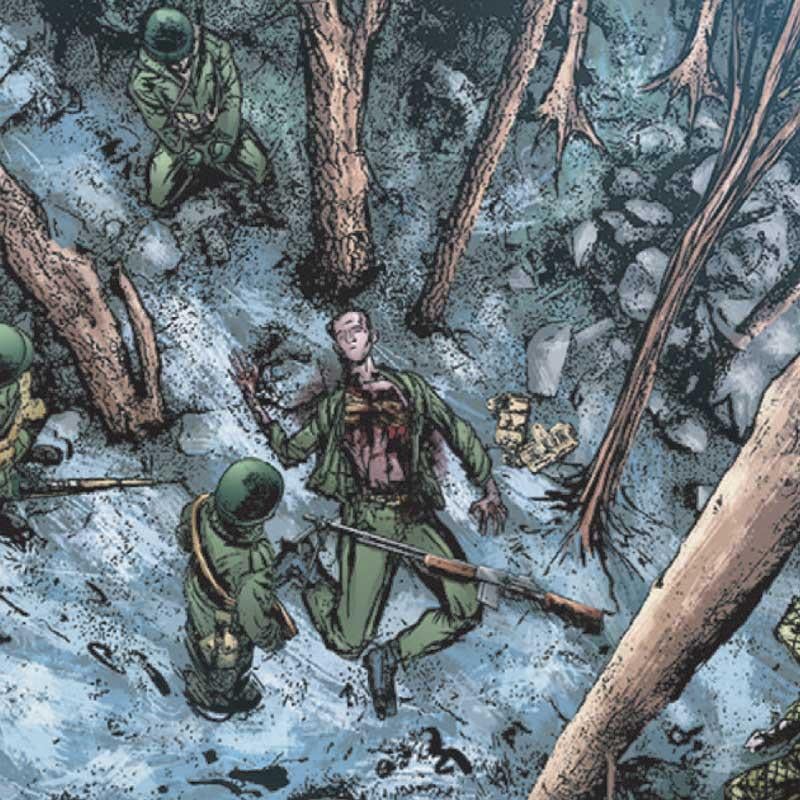
By the end of World War Two, Mitchell Red Cloud Jr. had done more than most in military service to his country, joining the U.S. Marines in 1941 at age 16 and fighting with “Carlson’s Raiders” at Guadalcanal and then Okinawa, where he was wounded in the shoulder by a gunshot during intense combat with the Japanese.

THE MEDAL OF HONOR GRAPHIC NOVEL FOR CPL. MITCHELL RED CLOUD JR. EXCERPTED ON THIS PAGE CAN BE READ IN ITS ENTIRETY FROM THE ASSOCIATION FOR THE UNITED STATES ARMY.
Discharged from the Marines as a sergeant at the end of the war, Red Cloud returned to his native Wisconsin, married, had a daughter and immersed himself in projects related to his ancestral Ho-Chunk tribe, writing an article for Wisconsin Archeologist in 1945 about traditional accounts of the Black Hawk War.
Red Cloud hailed from a family of warriors and leaders; his grandfather, Chief Winneshiek, refused with other tribe members to resettle in Nebraska and remained in Wisconsin in the area of Black River Falls. Perhaps inspired by this legacy, he returned to the armed forces in 1948, enlisting in the U.S. Army despite being unable to retain his Marine rank of sergeant.

CREDIT: ASSOCIATION OF THE UNITED STATES ARMY
“With utter fearlessness he maintained his firing position until severely wounded by enemy fire. Refusing assistance he pulled himself to his feet and wrapping his arm around a tree continued his deadly fire again, until he was fatally wounded.”
When the Korean War began in June 1950, Red Cloud and his unit were sent to fight, and on November 5, near Chonghyou, Korea, he was in a forward listening post on the point of a ridge in front of his company’s command post. Now a corporal, he was the first to sound the alarm as Chinese Communist troops approached and then charged from the underbrush less than 100 feet away.
Blasting away with his automatic rifle, Red Cloud blunted the charge long enough for his company to mount a defense. Wounded twice in the chest, Red Cloud refused to be evacuated and remained at his post as it was reinforced. Hit again during the next assault, he refused treatment and insisted on staying put to cover the unit’s withdrawal.

CREDIT: ASSOCIATION OF THE UNITED STATES ARMY
“When last seen, he was still firing away at the enemy.”

CREDIT: ASSOCIATION OF THE UNITED STATES ARMY
He had another soldier tie him upright to a tree with a web belt so he could continue fighting as his fellow soldiers withdrew. When last seen, he was still firing away at the enemy. The next day, after repelling the attack, U.S. forces found Red Cloud’s body surrounded by dead Chinese. He had been shot at least eight times.
“This heroic act stopped the enemy from overrunning his company's position and gained time for reorganization and evacuation of the wounded,” reads his Medal of Honor citation. The award was presented to his mother by Gen. Omar N. Bradley in a ceremony at the Pentagon on April 3, 1951. Just 26 years old at the time of his death, Red Cloud was interred in the Decorah Cemetery in Black River Falls, Wisconsin.
Among other honors, parks in La Crosse and Komensky, Wisconsin, are named in his memory and a section of state highway 54 was renamed Red Cloud Highway. Each July 4, the Ho-Chunk Nation observes Corporal Mitchell Red Cloud Jr. Day and, in 1999, the U.S. Navy commissioned the USNS Red Cloud, a vehicle cargo ship, in his honor. As several of the men who served with Red Cloud stood by, the ship was christened by his daughter, Annita, who was dressed in traditional Ho-Chunk regalia.
Illustrations on this page are excerpted from the Association for the United States Army's Medal of Honor Graphic Novel for Cpl. Mitchell Red Cloud Jr. Read it online here.

LILLIAN “NELLIE” RED CLOUD ACCEPTS HER SON'S MEDAL OF HONOR. PHOTO CREDIT: U.S. ARMY